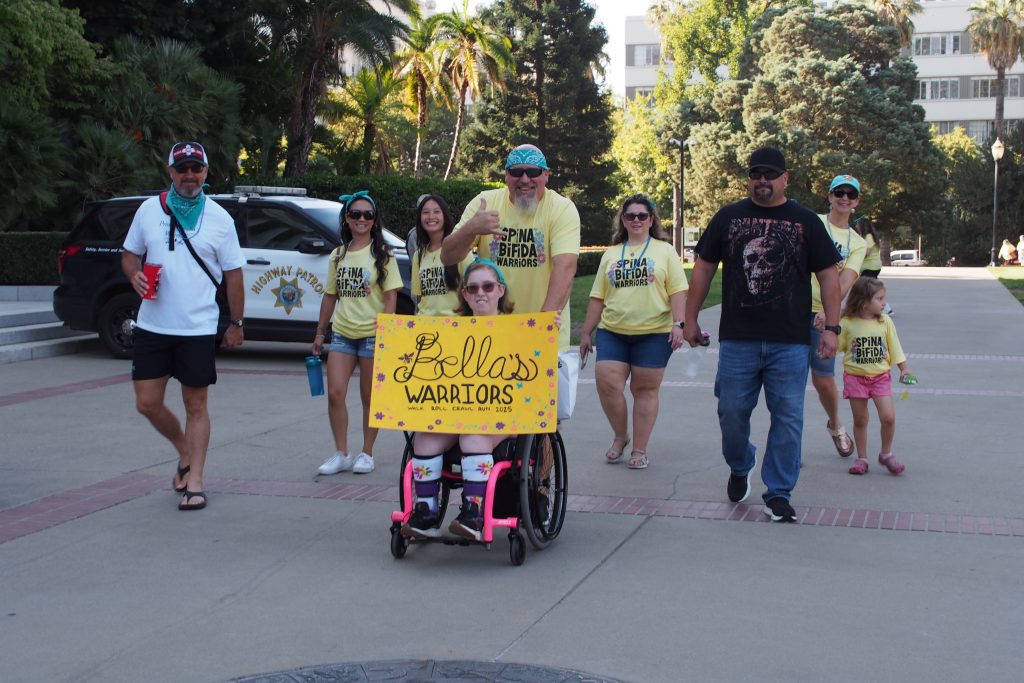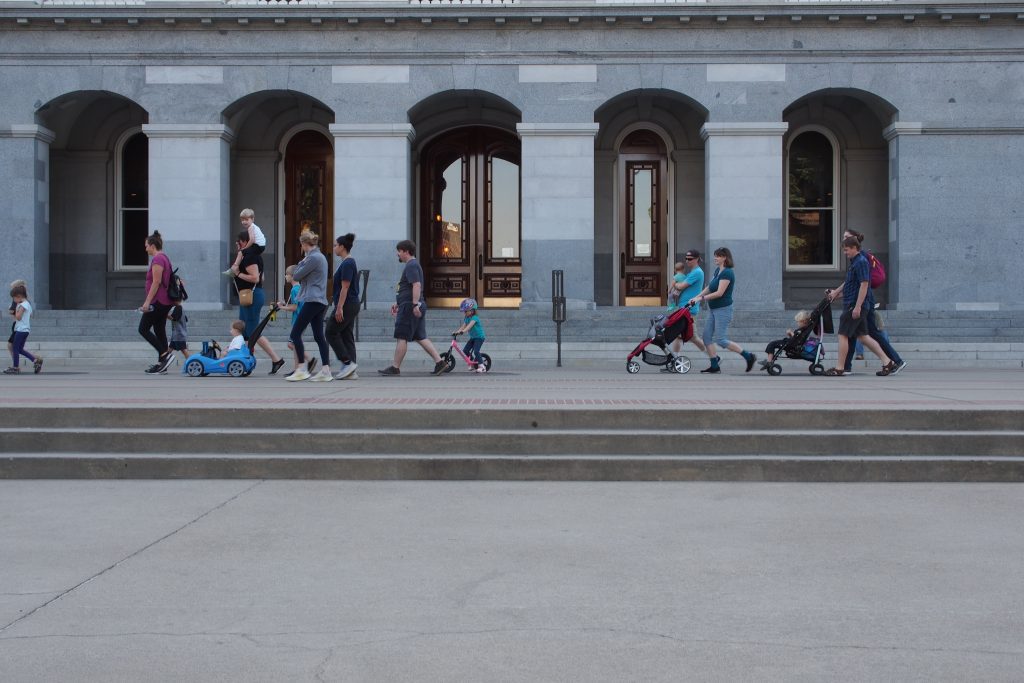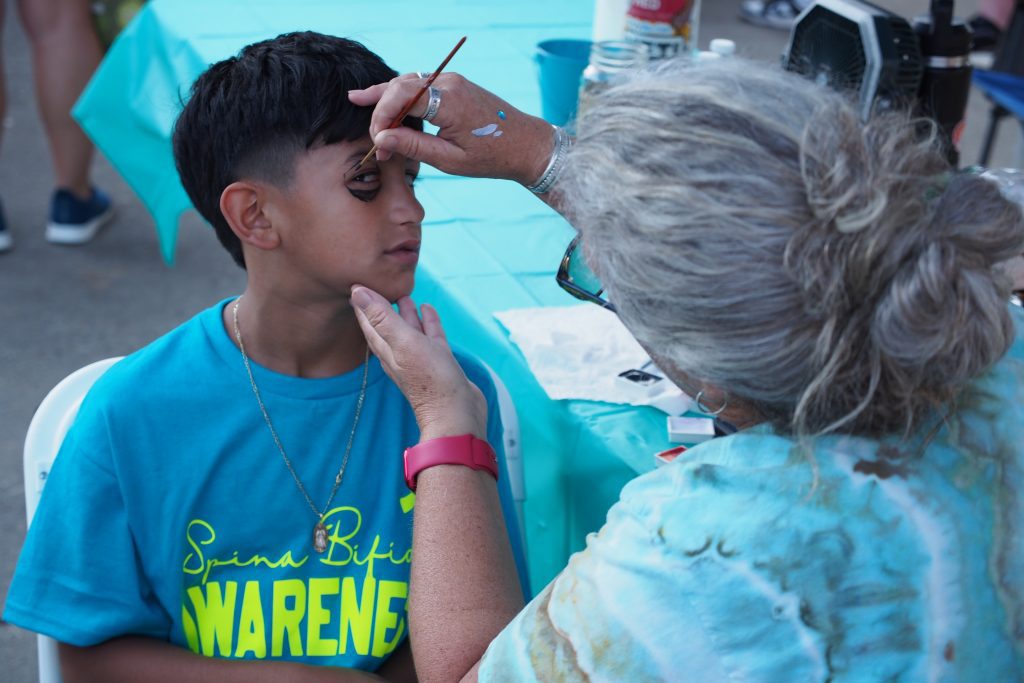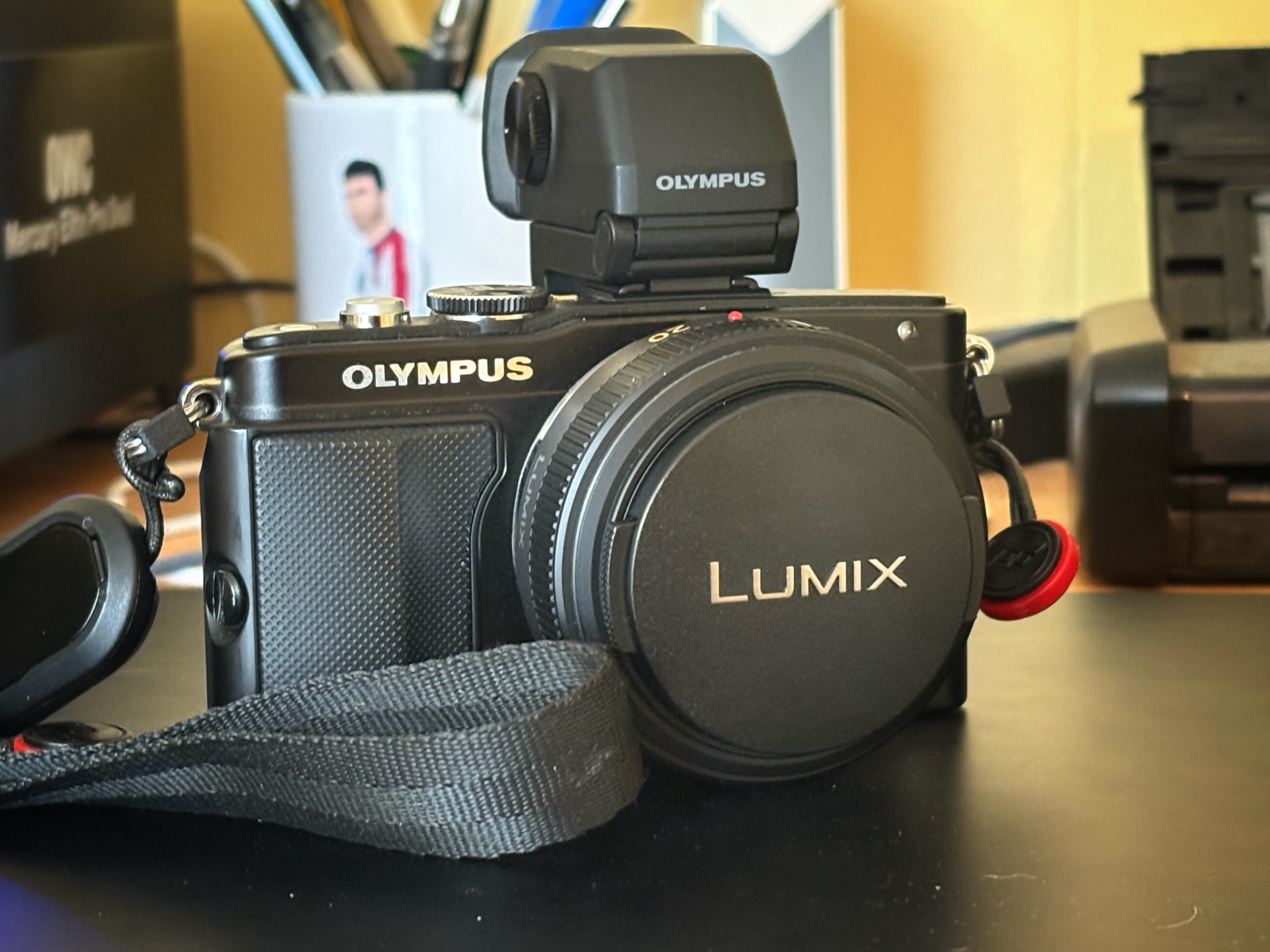My go-to travel camera is the Ricoh GRiii. But sometimes I want more flexibility than it offers. Which led me to rethink what a small, light interchangeable lens travel kit could look like.
I have a Panasonic GH4 body and some nice glass to go along with it, along with several legacy lenses and Micro 4/3 adapters. But as relatively small as this Micro 4/3 kit is, it’s still on the large and heavy side for travel. The Panasonic GM5 is the smallest premium M4/3 body there is, but I once rented one for a few days and didn’t care for it. Plus, prices for used examples are high. So that wasn’t an option.
Research led me to the Olympus E-PL5, which came out in 2012. It has the same 16MP sensor as the OM-D E-M5, Olympus’s then-flagship mirrorless body, packed into a nearly-pocketable body; a tilting rear touchscreen; customizable control buttons; and the ability to plug in a small electronic viewfinder (EVF). Reviews were positive. I found an excellent example for sale and bought it, along with an Olympus VF4 EVF viewfinder. Mount a sharp, tiny Panasonic 20/1.7 lens, and it’s a lightweight, capable kit for travel. But could it perform like I needed?
For a trip to California last week, where I was working at an event and playing tourist, this was my complete photo kit:
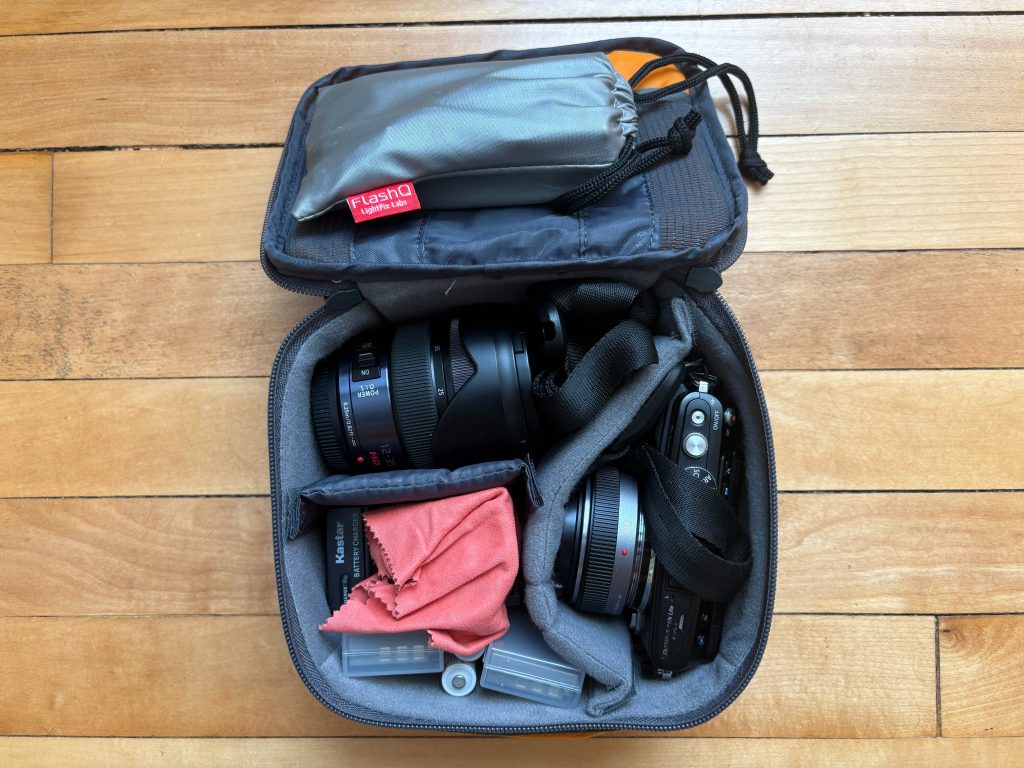
- Olympus E-PL5
- Olympus VF4 EVF
- Panasonic 20/1.7 lens
- Panasonic 12-35/2.8 zoom lens
- Flash Q Q20iii
- Two spare batteries and charger
- Peak Design wrist strap and camera strap
- LowePro case (model is long forgotten)
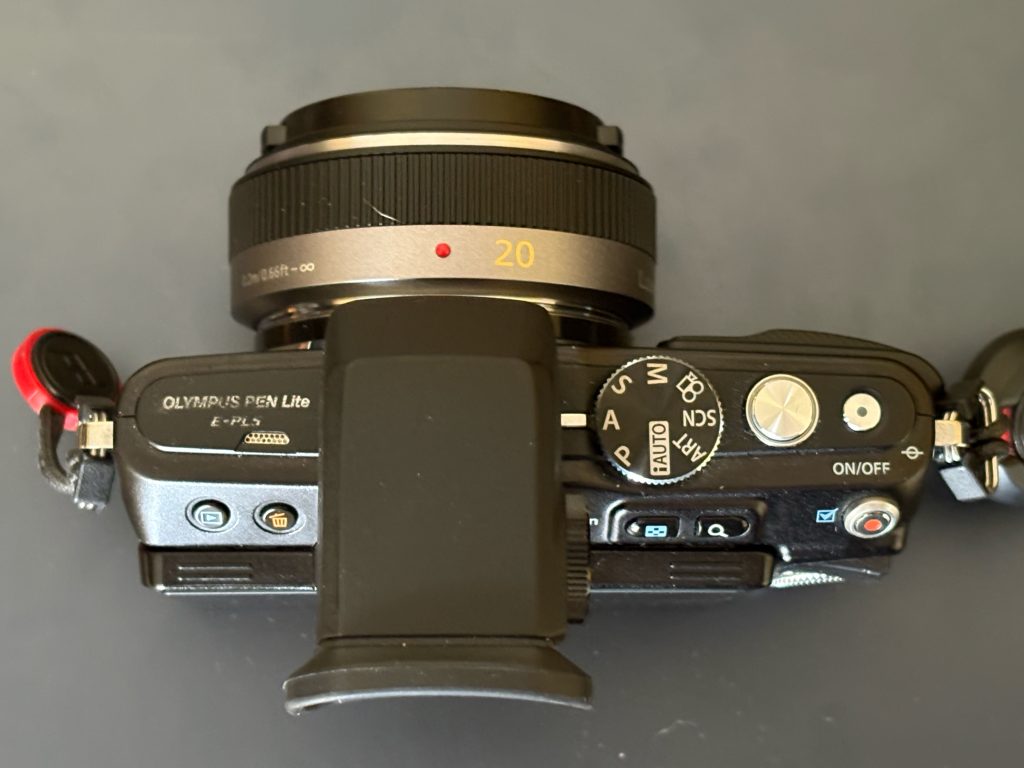
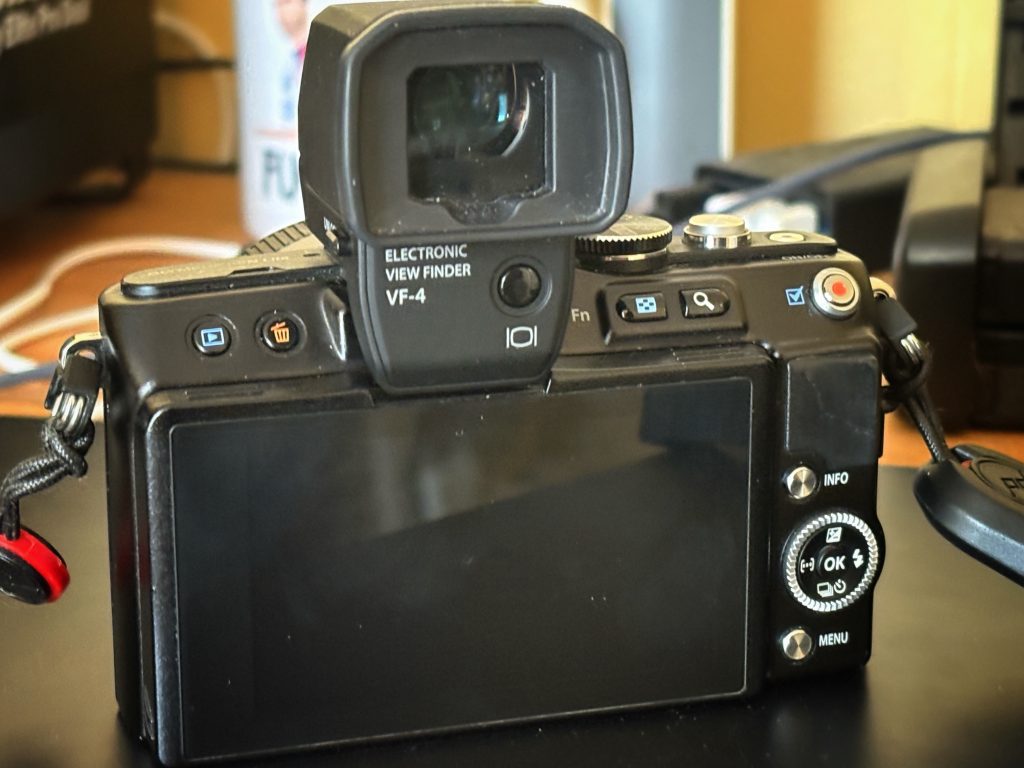
That’s a solid, versatile kit that takes up little space in my carry-on backpack.
Here are my impressions from several days shooting with the E-PL5, both as a tourist and at an event:
- First thing, enable the Super Control Panel menu. I’m not sure why it’s turned off by default, but it’s essential to shooting in anything more than Program mode.
- Small camera bodies aren’t always the easiest to handle, but the E-PL5 falls comfortably to hand, and the controls are easy to manipulate.
- The 20/1.7 lens is a perfect companion to this body. The 12-25 worked well, but anything larger or longer wouldn’t balance well with the E-PL5’s small body.
- The EVF transforms the camera, in a good way. It’s bright, and essential if you want to focus manually. The optical trigger isn’t supported by the E-PL5, so it’s necessary to manually switch from viewfinder to touchscreen. Fortunately, there’s a well-placed switch on the viewfinder that does this.
- JPEGs straight out of the camera are really pleasing. I was never tempted to shoot RAW (though you can).
- The in-body stabilization works well. I felt confident shooting in low light at slow shutter speeds.
- I mostly used the control wheel to change the focus point, but there were a few times that using the touchscreen to change focus and release the shutter came in handy.
- The articulated touchscreen is a nice idea, but I’m not sure how much I’ll use it.
- SD card write times can be noticeably slow.
- Battery life is superb.
- It shoots video, but it’s no GH4. But, I didn’t buy it to shoot videos.
Is the Olympus E-PL5 still a good option, 12 years after it was made? Definitely. It’s small and light, accommodates a wide range of M4/3 and legacy lenses, produces pleasing JPEGs, and costs far less than a Panasonic GM1 (never mind some of the other options in small M4/3 bodies). I’d love to have a Pen F Digital, but the E-PL5 is a lot of camera for far less money, and will be the kit I’ll take along on future trips where I need more than a fixed wide angle lens.
Sample Photos
Shot with the Panasonic 20/1.7.
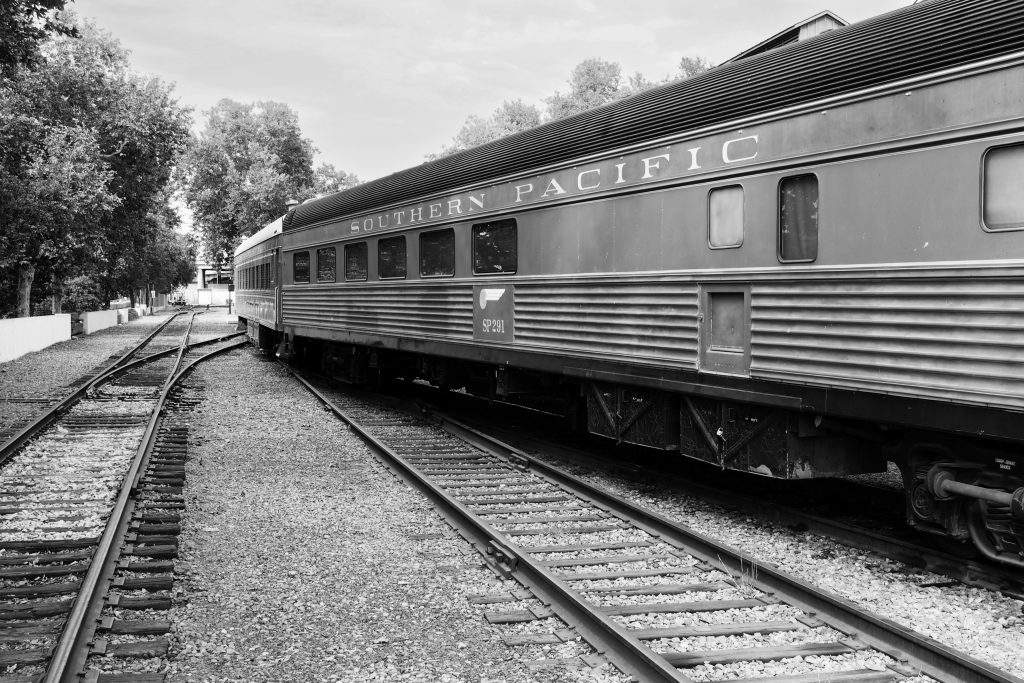

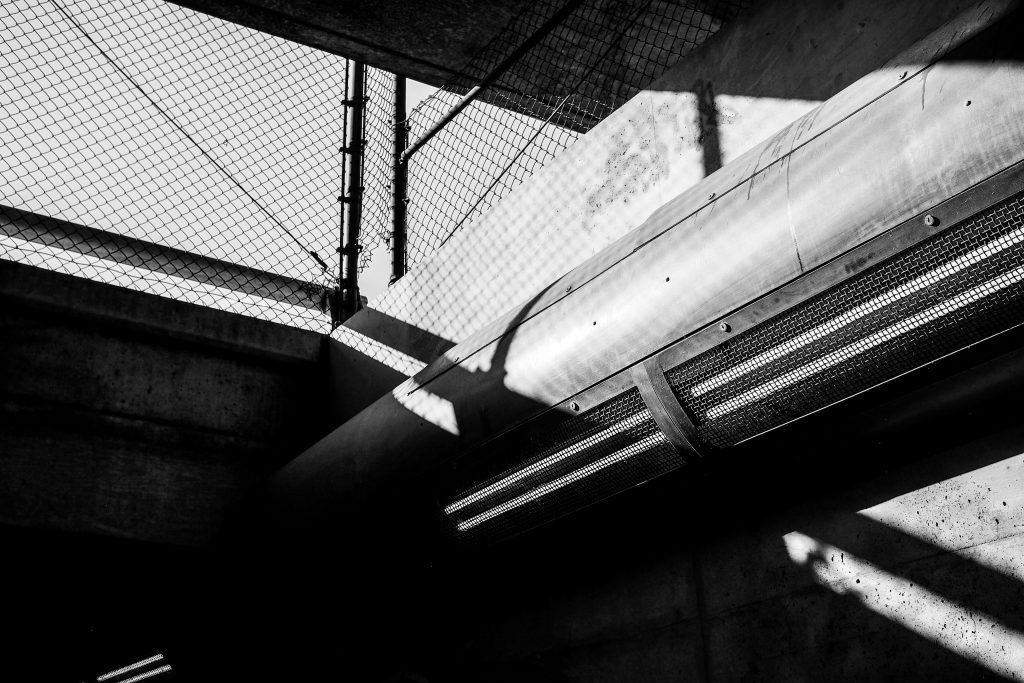
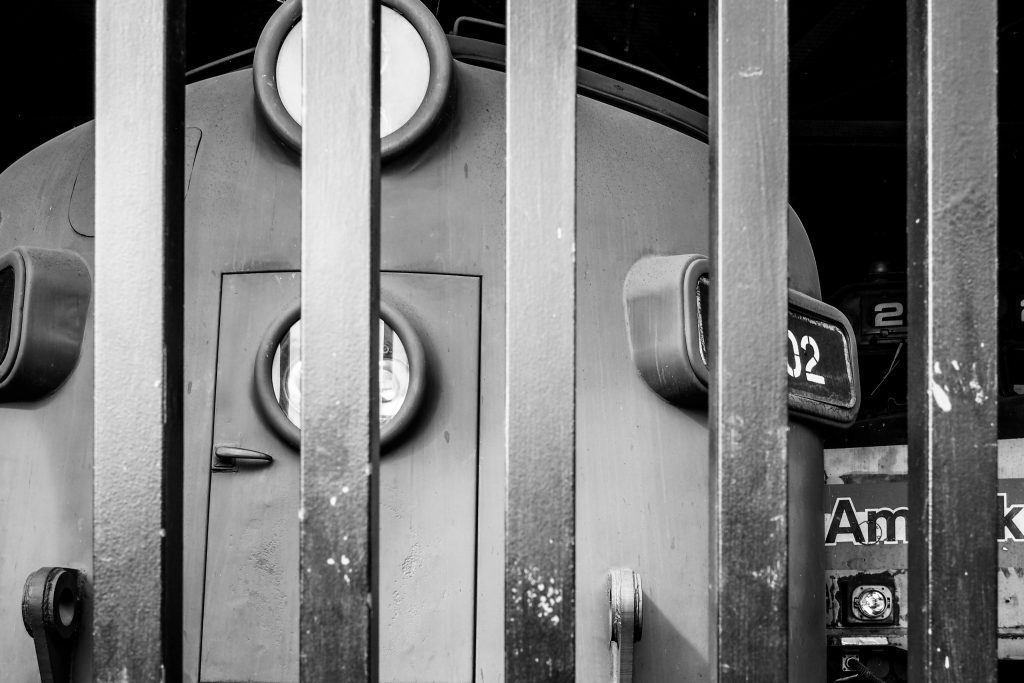


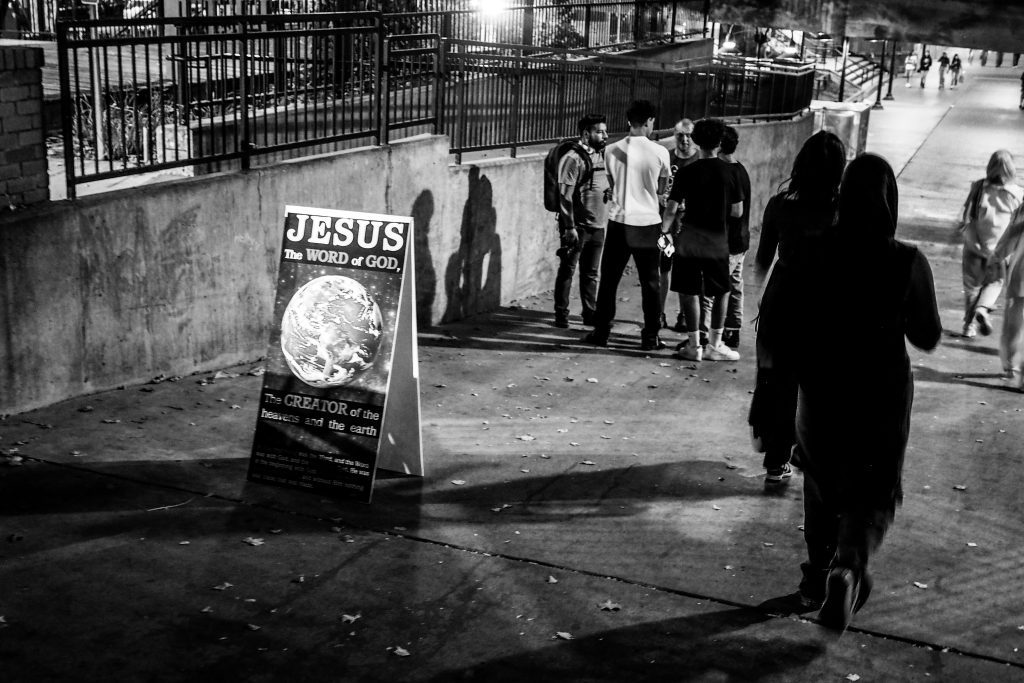
Shot with the Panasonic 12-35/2.8.


